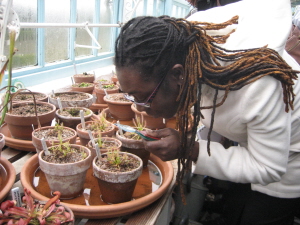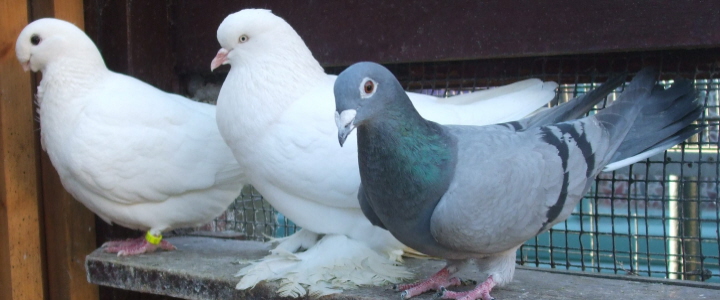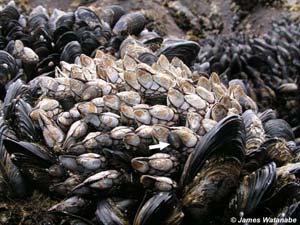- KS2 (7-11) Darwin Inspired Learning
- KS3 (11-14) Darwin Inspired Learning
- Post-16 Darwin Inspired Learning
Make a donation
Help us make the ordinary extraordinary for children, young people and teachers.
Post-16 Darwin Inspired Learning
 The Charles Darwin Trust, in collaboration with the Linnean Society, has developed three modules for post-16 students. They are directly linked to the current biology curricula for awarding bodies in England, but have worldwide relevance to science education. The materials stress how Darwin critically questioned and observed the natural world by using the living laboratory of his home and garden, and by drawing on his Beagle voyage experiences and observations.
The Charles Darwin Trust, in collaboration with the Linnean Society, has developed three modules for post-16 students. They are directly linked to the current biology curricula for awarding bodies in England, but have worldwide relevance to science education. The materials stress how Darwin critically questioned and observed the natural world by using the living laboratory of his home and garden, and by drawing on his Beagle voyage experiences and observations.
The modules are designed to help teachers engage their students with Darwin Inspired learning, both inside and outside the classroom. They present a fresh look at the knowledge and the concepts students need to understand for post-16 Biology and highlight the interconnectedness of both life and science. Interviews with contemporary scientists, working in the same areas as Darwin, are used to stimulate students' understanding of how scientists work today, and to reflect on the differences and similarities in biological science now and then.
Module 1- Funky Pigeons

This module uses Darwin’s well-known observations of the Galápagos finches and his less well-known, but nonetheless crucial, work on domestic pigeons to explore and investigate fundamental ideas in genetics and evolution.
This module examines Darwin’s legacy for contemporary science and our current understanding of inheritance mechanisms, natural selection, artificial selection, and speciation. Darwin’s explanations, the work of early geneticists and current biological research are examined using a combination of problem-based enquiry, hands-on activities and contemporary case study.
-
Teachers Pack
-
Student Worksheets
-
Lesson 1 - Artificial selection and genetics
-
Lesson 2 - Genetics
-
Lesson 3 - Speciation
-
Darwin Inspired Scientists (videos)
Module 2- Brilliant Barnacles
This module uses barnacles, small filter feeding marine crustaceans that fix themselves on rocks and boats, as the basis for students to learn the principles of  classification, taxonomy and phylogeny.
classification, taxonomy and phylogeny.
In this module students will study barnacle morphology, life histories and life styles as Darwin did. He based his classification and search for a common ancestor upon his studies. Recent work using genetic and molecular evidence and scanning electron microscopy shows how some of the key difficulties in drawing the phylogenetic tree of barnacles have been resolved very recently by systematists and how some new questions have been raised.
Artemia, the brine shrimp, is used to explore the body plan of arthropod crustaceans and to understand how the taxonomic hierarchy is worked out through simple microscope work.
-
Teachers Pack
-
Student Pack
-
Lesson 1 - Morphology and life histories of barnacles
-
Lesson 2 - Building the tree of life - molecular evidence
-
Lesson 3 - New evidence from scanning electron microscopy (SEM)
-
Darwin Inspired Scientists (videos)
Module 3- Murderous Plants
This module, inspired by the work of Charles Darwin and his American correspondent Mary Treat, considers adaptation and competition in the context of carnivorous plants.
Charles Darwin was fascinated by plant nutrition in relation to carnivorous plants. Both he and Treat conducted investigations through observation in the field and experimentation in their homes and gardens. He was particularly interested in a plant exhibiting animal-like behaviours, and at one point was said to exclaim: ‘By Jove I sometimes think Drosera is a disguised animal’. He was so passionate about this plant he called it 'My beloved Drosera'.
This module also uses carnivorous plants and their habitats as a stepping-stone for exploring broader ecological concepts, in particular the structure of an ecosystem and predator-prey relationships.
Contemporary scientists, such as Aaron Ellison at Harvard University, continue to research these enigmatic plants and their extraordinary forms and behaviours. Students will engage with late Victorian botanical science in relation to how modern science works and consider the continuing role of evidence, theorising and peer-review.
-
Teachers Pack
-
Student Worksheets
-
Lesson 1 - Plant nutrition and adaptation
-
Lesson 2 - Following in Darwin and Treat’s Footsteps: Investigating Carnivorous Plants
-
Lesson 3 - Conserving carnivorous plants in a changing landscape
-
Darwin Inspired Scientists (videos)
-
Pitcher Plant (Sarracenia) Dissection (video)

